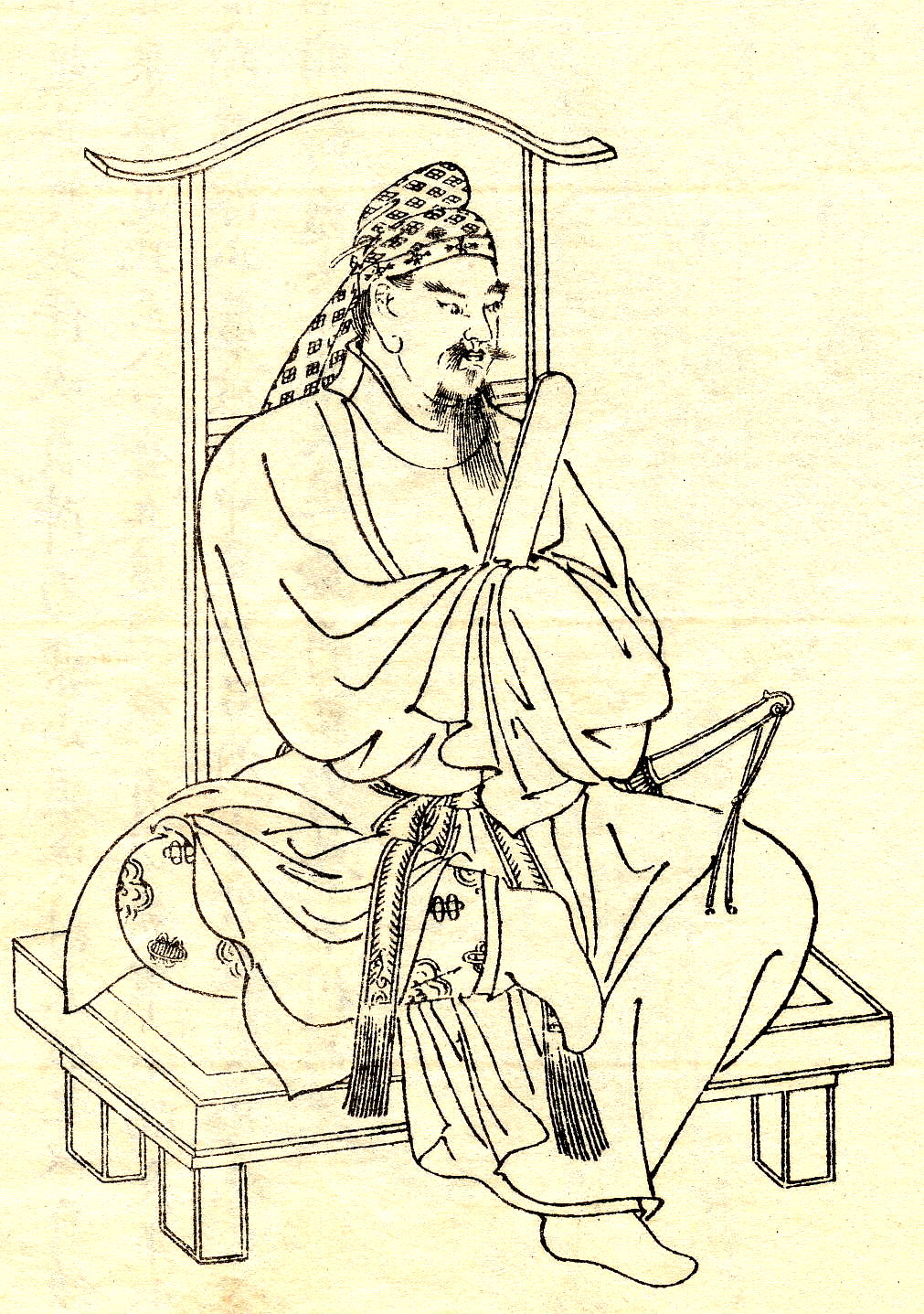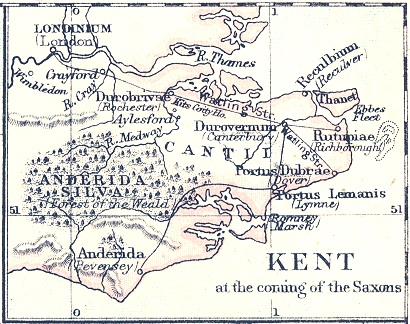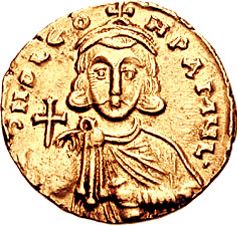|
669
__NOTOC__ Year 669 ( DCLXIX) was a common year starting on Monday (link will display the full calendar) of the Julian calendar. The denomination 669 for this year has been used since the early medieval period, when the Anno Domini calendar era became the prevalent method in Europe for naming years. Events By place Byzantine Empire * Spring – Arab forces that have taken Chalcedon, on the Asian shore of the Bosporus, threaten the Byzantine capital Constantinople. The Muslim-Arabs are decimated by famine and disease. Yazid, Arab commander, retreats to the island of Cyzicus (modern Turkey). Britain * King Ecgberht of Kent loses the overlordship of Surrey to King Wulfhere of Mercia. Ecgberht then grants the old Saxon Shore Fort at Reculver (south-east England) to a priest named Bassa, in order to establish a monastery dedicated to St. Mary (approximate date). Asia * November 14 – Kamatari, Japanese statesman and reformer, receives the surname Fujiwara ... [...More Info...] [...Related Items...] OR: [Wikipedia] [Google] [Baidu] |
Reculver
Reculver is a village and coastal resort about east of Herne Bay on the north coast of Kent in south-east England. It is in the ward of the same name, in the City of Canterbury district of Kent. Reculver once occupied a strategic location at the north-western end of the Wantsum Channel, a sea lane that separated the Isle of Thanet and the Kent mainland until the late Middle Ages. This led the Romans to build a small fort there at the time of their conquest of Britain in 43 AD, and, starting late in the 2nd century, they built a larger fort, or ''castrum'', called ''Regulbium'', which later became one of the chain of Saxon Shore forts. Following the withdrawal of the Western Roman Empire in ca. early C4th, the Brythons again took control of the lands until Anglo-Saxon invasions shortly afterward. By the 7th century Reculver had become a landed estate of the Anglo-Saxon kings of Kent. The site of the Roman fort was given over for the establishment of a monastery dedica ... [...More Info...] [...Related Items...] OR: [Wikipedia] [Google] [Baidu] |
Pope Gregory II
Pope Gregory II ( la, Gregorius II; 669 – 11 February 731) was the bishop of Rome from 19 May 715 to his death.Mann, Horace. "Pope St. Gregory II." The Catholic Encyclopedia Vol. 6. New York: Robert Appleton Company, 1909. 18 September 2017 His defiance of Emperor as a result of the iconoclastic controversy in the Eastern Empire prepared the way for a long series of revolts, schisms, and civil wars that eventually led to the establishment of the [...More Info...] [...Related Items...] OR: [Wikipedia] [Google] [Baidu] |
Fujiwara No Kamatari
Fujiwara no Kamatari (藤原 鎌足, 614 – November 14, 669) was a Japanese statesman, courtier and aristocrat during the Asuka period (538–710).Nussbaum, Louis-Frédéric. (2005). "Fujiwara no Tadahira" in ; Brinkley, Frank ''et al.'' (1915). He is the founder of the Fujiwara clan, the most powerful aristocratic family in Japan during Nara and Heian periods. He, along with the Mononobe clan, was a supporter of Shinto and fought the introduction of Buddhism to Japan. The Soga clan, defenders of Buddhism in the Asuka period, defeated Kamatari and the Mononobe clan and Buddhism became the dominant religion of the imperial court. Kamatari, along with Prince Naka no Ōe, later Emperor Tenji (626–672), launched the Taika Reform of 645, which centralized and strengthened the central government. Just before his death he received the surname ''Fujiwara'' and the rank Taishōkan from Emperor Tenji, thus establishing the Fujiwara clan. Biography Kamatari was born to the Nakatom ... [...More Info...] [...Related Items...] OR: [Wikipedia] [Google] [Baidu] |
Byzantine Empire
The Byzantine Empire, also referred to as the Eastern Roman Empire or Byzantium, was the continuation of the Roman Empire primarily in its eastern provinces during Late Antiquity and the Middle Ages, when its capital city was Constantinople. It survived the fragmentation and fall of the Western Roman Empire in the 5th century AD and continued to exist for an additional thousand years until the fall of Constantinople to the Ottoman Empire in 1453. During most of its existence, the empire remained the most powerful economic, cultural, and military force in Europe. The terms "Byzantine Empire" and "Eastern Roman Empire" were coined after the end of the realm; its citizens continued to refer to their empire as the Roman Empire, and to themselves as Romans—a term which Greeks continued to use for themselves into Ottoman times. Although the Roman state continued and its traditions were maintained, modern historians prefer to differentiate the Byzantine Empire from Ancient Rome a ... [...More Info...] [...Related Items...] OR: [Wikipedia] [Google] [Baidu] |
Julian Calendar
The Julian calendar, proposed by Roman consul Julius Caesar in 46 BC, was a reform of the Roman calendar. It took effect on , by edict. It was designed with the aid of Greek mathematicians and astronomers such as Sosigenes of Alexandria. The calendar became the predominant calendar in the Roman Empire and subsequently most of the Western world for more than 1,600 years until 1582, when Pope Gregory XIII promulgated a minor modification to reduce the average length of the year from 365.25 days to 365.2425 days and thus corrected the Julian calendar's drift against the Tropical year, solar year. adoption of the Gregorian calendar, Worldwide adoption of this revised calendar, which became known as the Gregorian calendar, took place over the subsequent centuries, first in Catholic Church, Catholic countries and subsequently in Protestantism, Protestant countries of the Western Christianity, Western Christian world. The Julian calendar is still used in parts of the East ... [...More Info...] [...Related Items...] OR: [Wikipedia] [Google] [Baidu] |
England
England is a country that is part of the United Kingdom. It shares land borders with Wales to its west and Scotland to its north. The Irish Sea lies northwest and the Celtic Sea to the southwest. It is separated from continental Europe by the North Sea to the east and the English Channel to the south. The country covers five-eighths of the island of Great Britain, which lies in the North Atlantic, and includes over 100 smaller islands, such as the Isles of Scilly and the Isle of Wight. The area now called England was first inhabited by modern humans during the Upper Paleolithic period, but takes its name from the Angles, a Germanic tribe deriving its name from the Anglia peninsula, who settled during the 5th and 6th centuries. England became a unified state in the 10th century and has had a significant cultural and legal impact on the wider world since the Age of Discovery, which began during the 15th century. The English language, the Anglican Church, and Engli ... [...More Info...] [...Related Items...] OR: [Wikipedia] [Google] [Baidu] |
Emperor Tenji
, also known as Emperor Tenchi, was the 38th emperor of Japan,Imperial Household Agency (''Kunaichō'')天智天皇 (38)/ref> according to the traditional order of succession.Ponsonby-Fane, Richard. (1959). ''The Imperial House of Japan'', p. 52. Tenji's reign spanned the years from 661 through 672.Titsingh, Isaac. (1834). Traditional narrative He was the son of Emperor Jomei, but was preceded as ruler by his mother Empress Saimei. Prior to his accession, he was known as . Events of Tenji's life As prince, Naka no Ōe played a crucial role in ending the near-total control the Soga clan had over the imperial family. In 644, seeing the Soga continue to gain power, he conspired with Nakatomi no Kamatari and Soga no Kurayamada no Ishikawa no Maro to assassinate Soga no Iruka in what has come to be known as the Isshi Incident. Although the assassination did not go exactly as planned, Iruka was killed, and his father and predecessor, Soga no Emishi, committed suicide soon af ... [...More Info...] [...Related Items...] OR: [Wikipedia] [Google] [Baidu] |
Fujiwara Clan
was a powerful family of imperial regents in Japan, descending from the Nakatomi clan and, as legend held, through them their ancestral god Ame-no-Koyane. The Fujiwara prospered since the ancient times and dominated the imperial court until the Meiji Restoration in 1868. They held the title of Ason. The abbreviated form is . The 8th century clan history ''Tōshi Kaden'' (藤氏家伝) states the following at the biography of the clan's patriarch, Fujiwara no Kamatari (614–669): "Kamatari, the Inner Palace Minister who was also called ‘Chūrō'',''’ was a man of the Takechi district of Yamato Province. His forebears descended from Ame no Koyane no Mikoto; for generations they had administered the rites for Heaven and Earth, harmonizing the space between men and the gods. Therefore, it was ordered their clan was to be called Ōnakatomi" The clan originated when the founder, Nakatomi no Kamatari (614–669) of the Nakatomi clan, was rewarded by Emperor Tenji with the ho ... [...More Info...] [...Related Items...] OR: [Wikipedia] [Google] [Baidu] |
Famine
A famine is a widespread scarcity of food, caused by several factors including war, natural disasters, crop failure, population imbalance, widespread poverty, an economic catastrophe or government policies. This phenomenon is usually accompanied or followed by regional malnutrition, starvation, epidemic, and increased mortality. Every inhabited continent in the world has experienced a period of famine throughout history. In the 19th and 20th century, generally characterized Southeast and South Asia, as well as Eastern and Central Europe, in terms of having suffered most number of deaths from famine. The numbers dying from famine began to fall sharply from the 2000s. Since 2010, Africa has been the most affected continent of famine in the world. Definitions According to the United Nations World Food Programme, famine is declared when malnutrition is widespread, and when people have started dying of starvation through lack of access to sufficient, nutritious food. The Integrate ... [...More Info...] [...Related Items...] OR: [Wikipedia] [Google] [Baidu] |
Yazid I
Yazid ibn Mu'awiya ibn Abi Sufyan ( ar, يزيد بن معاوية بن أبي سفيان, Yazīd ibn Muʿāwiya ibn ʾAbī Sufyān; 64611 November 683), commonly known as Yazid I, was the second caliph of the Umayyad Caliphate. He ruled from April 680 until his death in November 683. His appointment was the first hereditary succession to the caliphate in Islamic history. His caliphate was marked by the death of Muhammad's grandson Husayn ibn Ali and the start of the crisis known as the Second Fitna. Yazid's nomination as heir apparent in (56 AH) by his father Mu'awiya I was opposed by several Muslim grandees from the Hejaz region, including Husayn and Abd Allah ibn al-Zubayr. The two men refused to recognize Yazid following his accession and took sanctuary in Mecca. When Husayn left for Kufa in Iraq to lead a revolt against Yazid, he was killed with his small band of supporters by Yazid's forces in the Battle of Karbala. Husayn's death caused resentment in the Hejaz, where ... [...More Info...] [...Related Items...] OR: [Wikipedia] [Google] [Baidu] |
Catholic Church
The Catholic Church, also known as the Roman Catholic Church, is the largest Christian church, with 1.3 billion baptized Catholics worldwide . It is among the world's oldest and largest international institutions, and has played a prominent role in the history and development of Western civilization. O'Collins, p. v (preface). The church consists of 24 ''sui iuris'' churches, including the Latin Church and 23 Eastern Catholic Churches, which comprise almost 3,500 dioceses and eparchies located around the world. The pope, who is the bishop of Rome, is the chief pastor of the church. The bishopric of Rome, known as the Holy See, is the central governing authority of the church. The administrative body of the Holy See, the Roman Curia, has its principal offices in Vatican City, a small enclave of the Italian city of Rome, of which the pope is head of state. The core beliefs of Catholicism are found in the Nicene Creed. The Catholic Church teaches that it is the ... [...More Info...] [...Related Items...] OR: [Wikipedia] [Google] [Baidu] |
November 14
Events Pre-1600 1601–1900 *1680 – German astronomer Gottfried Kirch discovers the Great Comet of 1680, the first comet to be discovered by telescope. *1770 – James Bruce discovers what he believes to be the source of the Nile. *1812 – Napoleonic Wars: At the Battle of Smoliani, French Marshals Victor and Oudinot are defeated by the Russians under General Peter Wittgenstein. *1851 – '' Moby-Dick'', a novel by Herman Melville, is published in the USA. *1889 – Pioneering female journalist Nellie Bly (aka Elizabeth Cochrane) begins a successful attempt to travel around the world in less than 80 days. She completes the trip in 72 days. 1901–present *1910 – Aviator Eugene Burton Ely performs the first takeoff from a ship in Hampton Roads, Virginia, taking off from a makeshift deck on the USS ''Birmingham'' in a Curtiss pusher. *1914 – The Joensuu City Hall, designed by Eliel Saarinen, was inaugurated in Joensuu, Finland. *1918 & ... [...More Info...] [...Related Items...] OR: [Wikipedia] [Google] [Baidu] |



_(cropped).jpg)

-by-Utagawa-Kuniyoshi.png)


.jpg)
.jpg)